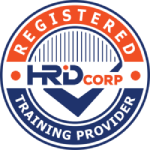About this Virtual Instructor Led Training (VILT)
Computer Vision or CV is a branch of Artificial Intelligence (AI) implementing Machine Learning (ML) and Deep Learning (DL) models to analyze visual data. Real-time analytics provide critical insights on streaming data from the multitude of sensors upstream, both surface and subsurface, and in the midstream and downstream. We can run anomaly detection algorithms on real-time data at the edge where the sensors are operationalized. Real-time data streams can address safety, sustainability, and operational efficiencies.
This 4 half-day Virtual Instructor-Led Training (VILT) course introduces CV and real-time data analysis. It discusses several architectures and data quality procedures to optimize operations and maximize production.
Course Highlights:
Day 1 opens the critical conversation of applying data-driven analytical models upstream, midstream, and downstream. For example, what are the standard soft-computing modeling techniques for image data and operationalizing models for real-time data? Day 1 also sheds light on data-driven approaches and helps participants decide when and how to get the most out of image data and real-time data streams.
Day 2 gets into the details and builds on the topics introduced on Day 1. Participants will go through an anonymized case study in each of the three areas: Computer Vision (Denoising images using segmentation regression models, developing an object detection model), Real-Time Analytics (DataStream preparation and event stream processing architectures).
Days 3 and 4 will draw upon advanced Machine / Deep Learning data-driven methodologies covering historical image and static data and real-time data, edge computing, and event stream processing using Digital Signal Processing algorithms. In addition, participants will develop a suite of data-driven workflows that provide a repeatable and scalable template for a Digital Twin case study based on the Machine / Deep Learning workflows discussed on Day 1 and Day 2.
By the end of this VILT course, participants will be equipped with an understanding of:
- Fundamental concepts of Machine Learning and Deep Learning in Oil & Gas
- Machine Learning workflow and how to implement the steps effectively
- The role of performance metrics and how to identify their essential methods
- Upstream, Midstream, and Downstream case studies with data and Python Notebooks for the practical application of ML/DL
- Computer Vision and Real-Time Analytics Machine Learning workflows
- Computer Vision and Real-Time Analytics Architectures
This VILT course is designed for engineers, asset managers, and data scientists working on upstream, midstream, and downstream image data and real-time data to solve business problems and who would like to learn how to apply data-driven modeling techniques for asset management.
It benefits managers and supervisors who wish to update their skills on the latest digital technology implemented across E&P, midstream, and downstream. In addition, Oil & Gas professionals interested in applying machine/deep learning methods for asset performance in their upstream, midstream, and downstream projects will find this case-study-driven course beneficial. Finally, some experience using Python in Jupyter Notebooks is recommended but not critical to the core training.
- Engineers & Data Scientists in Oil & Gas operators & service companies
- Technical professionals involved in upstream, midstream, and downstream
- Decision-makers responsible for Asset Performance Analytics and Digital Twin technologies.
- Intermediate
The VILT course will be delivered online in 4 half-days consisting of 4 hours per day, with two breaks of 10 minutes per day.
Course Duration: 4 half-day sessions, 4 hours per session (16 hours in total).
Your expert trainer started off his career in the oil & gas industry as a geophysicist, involved in processing and interpreting seismic data. While in the oil & gas industry, he was previously working with PGS, Petroleum Development Oman (PDO), ARCO and BP. He later moved into software development with SAS Institute, Inc. He has been involved in upstream Oil & Gas data driven model building across Exploration and Production for over 10 years. He is currently developing business strategies to establish Analytical Centres of Excellence and data management architectures across the Oil and Gas industry. He holds a Degree in Geology and Mathematics as well as a Master’s Degree Geophysics and Seismology from Durham University, England, UK. He currently holds 2 patents that have been issued out in 15 countries.
To further optimise your learning experience from our courses, we also offer individualized “One to One” coaching support for 2 hours post training. We can help improve your competence in your chosen area of interest, based on your learning needs and available hours. This is a great opportunity to improve your capability and confidence in a particular area of expertise. It will be delivered over a secure video conference call by one of our senior trainers. They will work with you to create a tailor-made coaching program that will help you achieve your goals faster.
Request for further information about post training coaching support and fees applicable for this.




